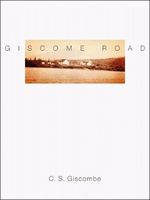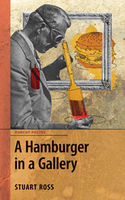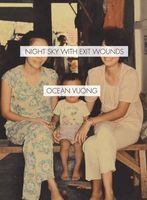Poetic Inspiration III
By Kate Sutherland
This is the third in a series of posts highlighting inventive poems that have broadened my sense of what poems can be and do, and sparked me to stretch further in my own work. (The previous instalments can be found here: http://open-book.ca/Writer-in-Residence/Kate-Sutherland/Poetic-Inspiration-II.) Again, continuing where I left off:
7. C.S. Giscombe’s Giscombe Road is a brilliant work of documentary poetry that focuses on various locations in northern British Columbia named for 19th century Jamaican miner and explorer John Robert Giscombe, and through that landscape meditates on history, genealogy, and race. My current favourite thing about the book is what C.S. Giscombe does in it with maps (a major preoccupation of mine at the moment). There are poems shaped like geographical features, and in other poems there are long, thin snippets of map that stand in for lines of text. There are maps that serve as illustrations, and maps that serve as stanzas. And (be still my heart), in the middle of one poem, there is a full-on, two-page, foldout map.
8. Thirty-eight pages at the end of A Hamburger in a Gallery, a collection of poems by Stuart Ross, are given over to an interview of Ross by editor (and fellow poet) Jason Camlot. More than 100 pages of poems precede the interview, a more generous page count than many a poetry collection yields, so one could regard the interview as a sort of appendix offering some context for the poems. Indeed, it does provide much interesting information about the process by which many of the poems were written and a sense of Ross’s poetic philosophy. But the interview can also be read as a creative work all its own: a comedy routine, or a collaborative poem that is very much part of the collection. The questions don’t appear designed to, and don’t elicit straightforward answers. Rather, answer follows question like one line of a poem follows another in twisting and surprising ways. And there is looping back, and repetition, and, well, you get the general idea, but you have to read it for yourself to get the full effect. And then, in Ross’s next collection, A Sparrow Came Down Resplendent, there are some wonderful Questionnaire poems with similarly productive disjunctions between questions and answers, and I keep meaning to ask him if there is any connection between those and the Hamburger interview.
9. There is a poem in Ocean Vuong’s collection Night Sky With Exit Wounds titled “Seventh Circle of Earth” that is all footnotes. On the page where the text of a poem would ordinarily appear, there are just numbers, carefully placed, and at the bottom of the page are footnotes containing the corresponding text, not just lines, but full stanzas with line breaks marked by virgules. This draws the eye down the page and back up again, prompting the reader to imagine the text in the space where the number indicates it belongs, but where Vuong chose not to put it, and then to think about why he chose to leave space where the text could have gone. (I want to thank Soraya Peerbaye for making me think more deeply about what Vuong was doing in this poem through the insights she put forward in our discussion of Vuong’s book in the first episode of the On the Line podcast: http://www.therustytoque.com/on-the-line/on-the-line-episozde-1-night-sky-with-exit-wounds-by-ocean-vuong.)
I’m planning one more post in this series on poetic inspiration before my term as Writer in Residence is up at the end of the month so, if you enjoy this sort of thing, stay tuned for that.
Your CanLit News
Subscribe to Open Book’s newsletter to get local book events, literary content, writing tips, and more in your inbox
The views expressed in the Writer-in-Residence blogs are those held by the authors and do not necessarily reflect the views of Open Book.
Kate Sutherland was born in Scotland, grew up in Saskatchewan, and now lives in Toronto, where she is a professor at Osgoode Hall Law School. She is the author of two collections of short stories: Summer Reading (winner of a Saskatchewan Book Award for Best First Book) and All In Together Girls. How to Draw a Rhinoceros is Sutherland’s first collection of poems.
You can reach Kate throughout the month of October at writer@open-book.ca.





